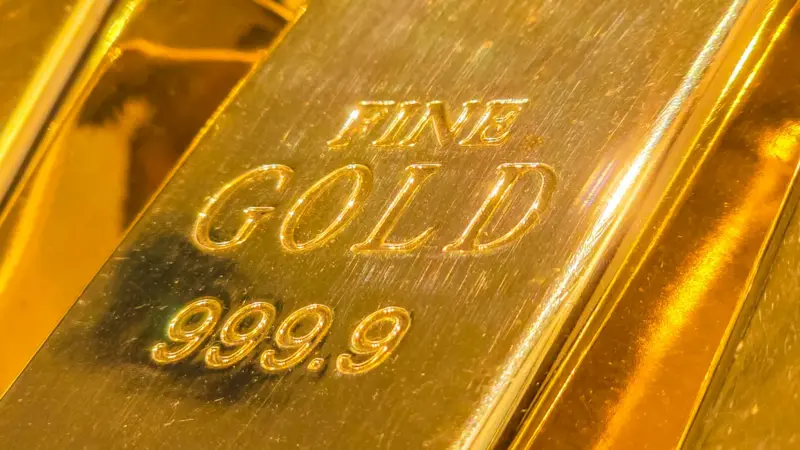Gold has constantly held a unique location in human history, handled as a secure haven over the centuries.
Beyond its function in jewelry and decoration, this precious metal has been a foundation of wealth for individuals and international locations, with a crucial position in the international financial system.
Today, gold is traded on worldwide markets, and its fees range day by day primarily based on more than one factors.
Gold Standard: A Historic Role inside the Monetary System
Gold is one of the maximum critical metals in the global and a completely unique asset, with the ability to enhance portfolio diversification, act as save of value, and hedges towards systemic risk.
For centuries, international locations used gold to mint coins before transitioning to paper money, which itself remained tied to gold through the Gold Standard.
This device connected a rustic’s forex to a set quantity of gold, allowing residents to change paper cash for gold at a guaranteed fee.
Who became the First Country to Adopt Gold Standard?
Britain was the primary to undertake the standard in 1821, accompanied by France, Germany, and the US. However, the gadget collapsed after World War I and formally resulted in 1971 when the U.S. Abandoned it due to declining reserves and rising deficits.
While the Gold Standard restricted inflation, it lacked flexibility for developing economies.
Today, gold now not anchors currencies, but imperative banks and governments still store it as a hedge towards instability.
Gold in Times of Conflict
During wars and crises, gold turns into a vital asset.
Unlike currencies that could lose fee, gold retains its really worth, is straightforward to move, and is globally tradable.
For example, Russia significantly multiplied its gold reserves after 2010 to cushion the effect of Western sanctions at some stage in the Ukraine crisis.
Gold as a Safe Investment
Experts describe gold as a “safe haven” for both businesses and individuals.
While shares and actual estate may generate better returns in strong times, gold preserves wealth in the course of uncertainty.
In many cultures, specially within the Arab international and India, gold serves a twin reason: adornment and financial savings.
In industrialized countries, gold additionally has full-size commercial applications, from electronics to medical devices or even space exploration technology.
Gold Trusts
Gold trusts are investment motors that keep bodily gold for traders. They offer a direct publicity to the price of gold and are traded on stock exchanges. Gold trusts are a famous choice for investors seeking to add gold to their portfolios with out the complexities of futures contracts or the safety issues of storing bodily gold.
Factors Driving Gold Prices
Several key factors affect gold’s fee on international markets:
- Supply and Demand: Mining turns into harder through the years, retaining fees on a long-time period upward fashion.
- Inflation and Interest Rates: High inflation and occasional hobby quotes usually push gold expenses higher.
- Currency Exchange Rates: Weak currencies growth call for for gold.
- Geopolitical Uncertainty: Wars, conflicts, and political instability frequently cause fee surges.
During the Russia-Ukraine warfare, as an instance, traders flocked to gold as their secure haven, using its price up via extra than 12% in 2022 only.
Bitcoin “the Digital Gold” Compete to be a Safe Haven
Bitcoin is frequently called “virtual gold” because of its constrained deliver, decentralization, and without borderlines nature, however it remains a long way greater volatile and volatile than traditional safe havens like gold.
In its early years, Bitcoin changed into in large part used by a small institution of tech fans with restrained actual international applications. Over the years, Bitcoin adoption has grown drastically with greater hobby and funding from institutional and retail traders. Approximately $196 billion well worth of Bitcoin at the moment are held through ETFs, international locations, public and personal businesses.
Investing in Ethereum is ready more than simply shopping for a cryptocurrency; it is approximately investing in a platform with extensive-ranging packages, from DeFi to tokenization and beyond. In our view, the funding case for Ethereum is powerful and diverse.
We assessed the correct weight of BTC and ETH in a 60% fairness and 40% bond portfolio, limiting the most mixed allocation to six%. This turned into carried out using 169 pattern portfolios with incremental additions of crypto exposure.
In evaluation, gold keeps to keep its position because the most relied on secure haven, while Bitcoin is higher visible as a speculative hedge in preference to a guaranteed save of price.
Gold: The Ultimate Safe Haven
As Irish creator George Bernard Shaw as soon as said:
“You have to select among trusting the natural balance of gold and the honesty and intelligence of government officers.
With all due respect, I endorse you to vote for gold.”
Even in today’s digital financial system, gold stays a timeless image of wealth, safety, and balance—making it an necessary asset for nations, buyers, and families alike.


